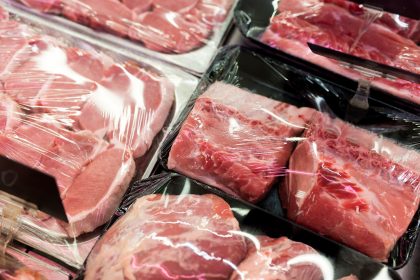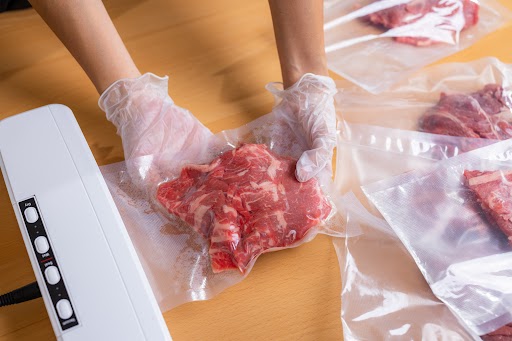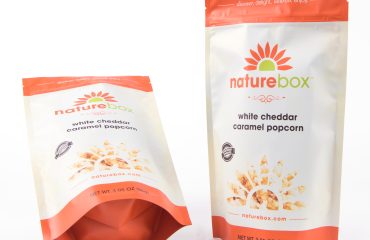Temperature-Sensitive Packaging: The Next Big Thing in Meat & Perishable Food Packaging

The food industry is constantly evolving to ensure better safety, freshness, and sustainability, particularly for perishable goods like meat and seafood. One of the most groundbreaking advancements in recent years is temperature-sensitive packaging, an innovation designed to help consumers and businesses monitor food safety in real time. Whether integrated into meat packaging supplies or advanced meat pouches, these intelligent solutions are revolutionising the way perishable foods are stored, transported, and consumed.
What Is Temperature-Sensitive Packaging?
Temperature-sensitive packaging uses special materials to track temperature changes and notify consumers or retailers when food has been exposed to unsafe conditions. This is especially important in the meat industry, where keeping the right temperature is key to stopping spoilage, bacterial growth, and foodborne illnesses.
The technology behind temperature-sensitive packaging typically falls into three main categories:
- Time-temperature indicators (TTIs): These labels change color when food is exposed to temperatures outside the safe range for too long.
- Thermochromic Inks: Special inks on packaging that shift color based on temperature fluctuations provide a visual cue for consumers.
- Smart Sensors & NFC Technology: Some advanced packaging solutions include digital sensors that send real-time temperature data to consumers’ smartphones or logistics teams.
Why Temperature-Sensitive Packaging Matters for the Meat Industry
1. Enhancing Food Safety
Meat and perishable foods are very sensitive to temperature changes. If they are not stored properly, they can grow harmful bacteria like Salmonella and E. coli. Temperature-sensitive packaging can help keep people safe by warning them if a product has been compromised.
2. Reducing Food Waste
Every year, millions of tons of food go to waste because people are unsure about its freshness. Smart packaging provides clear, real-time temperature indicators. This helps ensure that good food isn’t thrown away unnecessarily and also prevents the consumption of unsafe products.
3. Improving Supply Chain Management
Retailers and distributors can use technology that tracks temperature to monitor storage conditions in warehouses, delivery trucks, and grocery shelves. This helps keep meat products at safe temperatures throughout their journey, reducing spoilage and losses.
4. Building Consumer Trust
Modern consumers are increasingly concerned about food safety and quality. More than just a package: the psychology of meat packaging designs plays a crucial role in influencing purchasing decisions and consumer trust. Brands that incorporate temperature-sensitive packaging into their meat pouches or trays can provide an added layer of reassurance, leading to stronger customer loyalty.
Innovative Examples of Temperature-Sensitive Packaging
Several companies and researchers are leading the way in developing smart packaging solutions for meat and perishable foods. Some notable innovations include:
- Freshness-Indicating Labels: Some brands use color-changing labels that turn from green to red when meat is no longer fresh.
- Self-Cooling & Self-Heating Packaging: Certain packaging solutions are being developed to help regulate temperatures in transit, keeping meat at optimal conditions without external refrigeration.
- QR Code & NFC-Enabled Temperature Tracking: Consumers can scan packaging to check a product’s entire temperature history before purchasing or consuming it.
Conclusion
Temperature-sensitive packaging is changing the meat industry. As regulations become stricter and consumers want safer, fresher products, brands that invest in smart packaging will have an advantage. With new technologies in meat packaging and meat pouches, food can stay safe and fresh from production to the table.
FAQs about Temperature-Sensitive Packaging for perishable foods like meat:
2. How does temperature-sensitive packaging work?
Temperature-sensitive packaging works through indicators that react to changes in temperature:
- Time-temperature indicators (TTIs): These labels change color when food is exposed to unsafe temperatures for a certain period.
- Thermochromic Inks: These special inks change color based on temperature fluctuations, giving a visible cue about the product's freshness or safety.
- Smart Sensors & NFC Technology: Some advanced packaging includes sensors that provide real-time temperature data, which is often sent to a smartphone or logistics team. This allows monitoring throughout the supply chain.
3. Why is temperature-sensitive packaging important for the meat industry?
Temperature-sensitive packaging plays a critical role in the meat industry because it helps:
- Enhance food safety by alerting consumers and retailers to potential temperature abuse, reducing the risk of bacterial contamination.
- Reduce food waste by preventing perfectly good meat from being discarded due to uncertainty about its safety.
- Improve supply chain management by allowing temperature tracking throughout the entire transportation and storage process, ensuring meat stays at safe temperatures from production to consumption.
- Build consumer trust by providing visible indicators ensuring fresh and safe meat.
4. How does temperature-sensitive packaging reduce food waste?
Temperature-sensitive packaging helps ensure that only meat products kept at safe temperatures are sold or consumed. It provides real-time indicators of temperature exposure. This reduces uncertainty about product safety, prevents food from being discarded too early, and ensures that only spoiled or unsafe products are removed from circulation.
5. What are some examples of temperature-sensitive packaging innovations?
Some innovative examples of temperature-sensitive packaging in the meat industry include:
- Freshness-indicating labels: These labels change color (e.g., from green to red) to show when meat is no longer fresh.
- Self-cooling and self-heating packaging is designed to regulate the temperature of the meat during transit, keeping it safe without external refrigeration.
- QR codes and NFC-enabled temperature tracking allow consumers to scan packaging and check a product’s temperature history before purchase to ensure it has been appropriately stored.
6. What are the food industry's future trends for temperature-sensitive packaging?
As technology gets better, we can expect more advanced and integrated packaging solutions that respond to temperature changes. We will see trends in the future that include:
- Smart packaging that communicates with consumers’ smartphones to provide real-time temperature monitoring.
- Advanced self-regulating materials that can maintain optimal temperature conditions without external energy sources.
- Sustainable packaging options that integrate temperature-sensitive features while minimising environmental impact.
This technology will become increasingly important as consumer demand grows for fresher, safer, and more reliable food products.






You must be logged in to post a comment.